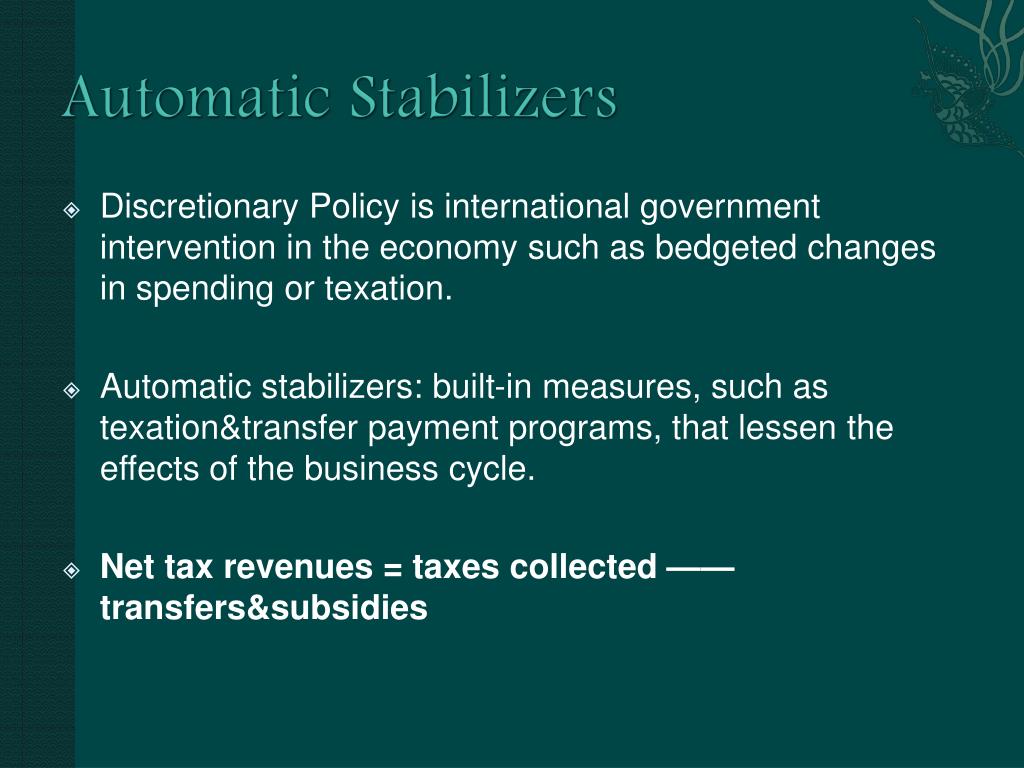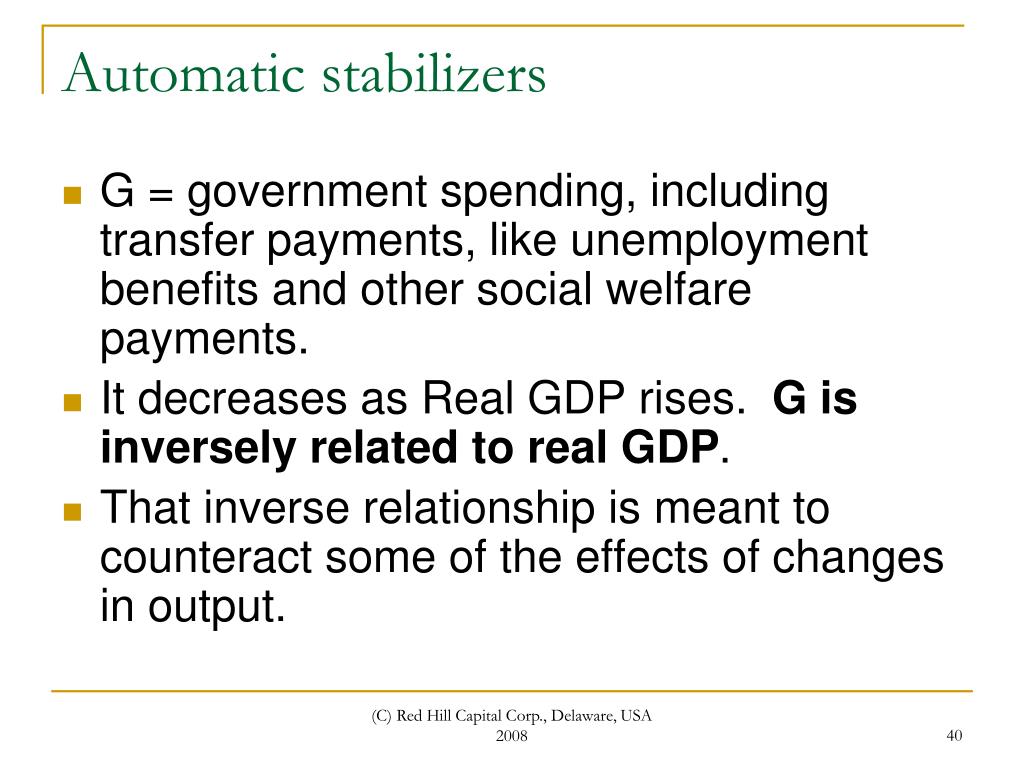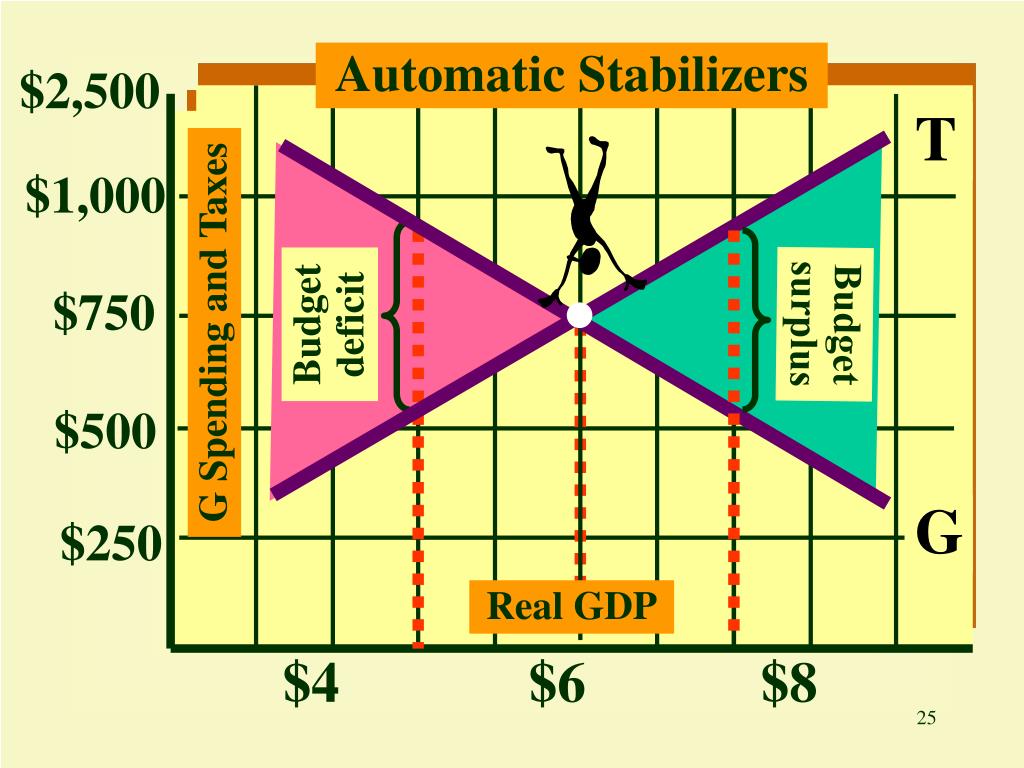
Bush were undertaken primarily to promote national security. For example, the increase in defense spending in the early 1980s under President Ronald Reagan and in the administration of George W. Because they are automatic, their operation is already incorporated in the curve itself.Īs we begin to look at deliberate government efforts to stabilize the economy through fiscal policy choices, we note that most of the government’s taxing and spending is for purposes other than economic stabilization. It is important to note that changes in expenditures and taxes that occur through automatic stabilizers do not shift the aggregate demand curve. Because they affect disposable personal income directly, and because changes in disposable personal income are closely linked to changes in consumption, automatic stabilizers act swiftly to reduce the degree of changes in real GDP. As soon as income starts to change, they go to work. The advantage of automatic stabilizers is suggested by their name. The introduction in the 1960s and 1970s of means-tested federal transfer payments, in which individuals qualify depending on their income, added to the nation’s arsenal of automatic stabilizers.

Increases in income tax rates and unemployment benefits have enhanced their importance as automatic stabilizers.

Rising transfer payments and falling tax collections helped cushion households from the impact of the recession and kept real GDP from falling as much as it would have otherwise.Īutomatic stabilizers have emerged as key elements of fiscal policy. Real disposable personal income thus fell by only 0.9% during the 1990-1991 recession, a much smaller percentage than the reduction in real GDP. Furthermore, the reduction in incomes increased transfer payment spending, boosting disposable personal income further. The reduction in economic activity automatically reduced tax payments, reducing the impact of the downturn on disposable personal income. Real GDP fell 1.6% from the peak to the trough of that recession. To see how automatic stabilizers work, consider the decline in real GDP that occurred during the recession of 1990–1991. Automatic stabilizers tend to increase GDP when it is falling and reduce GDP when it is rising. As incomes fall, people pay less in income taxes.Īny government program that tends to reduce fluctuations in GDP automatically is called an automatic stabilizer. Because more people become eligible for income supplements when income is falling, transfer payments reduce the effect of a change in real GDP on disposable personal income and thus help to insulate households from the impact of the change. All were designed to stimulate aggregate demand and close recessionary gaps.Ĭertain government expenditure and taxation policies tend to insulate individuals from the impact of shocks to the economy.

The 2009 fiscal stimulus bill passed in the first months of the administration of Barack Obama included both tax cuts and spending increases. Bush administrations and the increase in government purchases proposed by President Clinton in 1993. Four examples of discretionary fiscal policy choices were the tax cuts introduced by the Kennedy, Reagan, and George W. Then we will look at how discretionary fiscal policies work. Some tax and expenditure programs change automatically with the level of economic activity.

Like monetary policy, it can be used in an effort to close a recessionary or an inflationary gap.


 0 kommentar(er)
0 kommentar(er)
